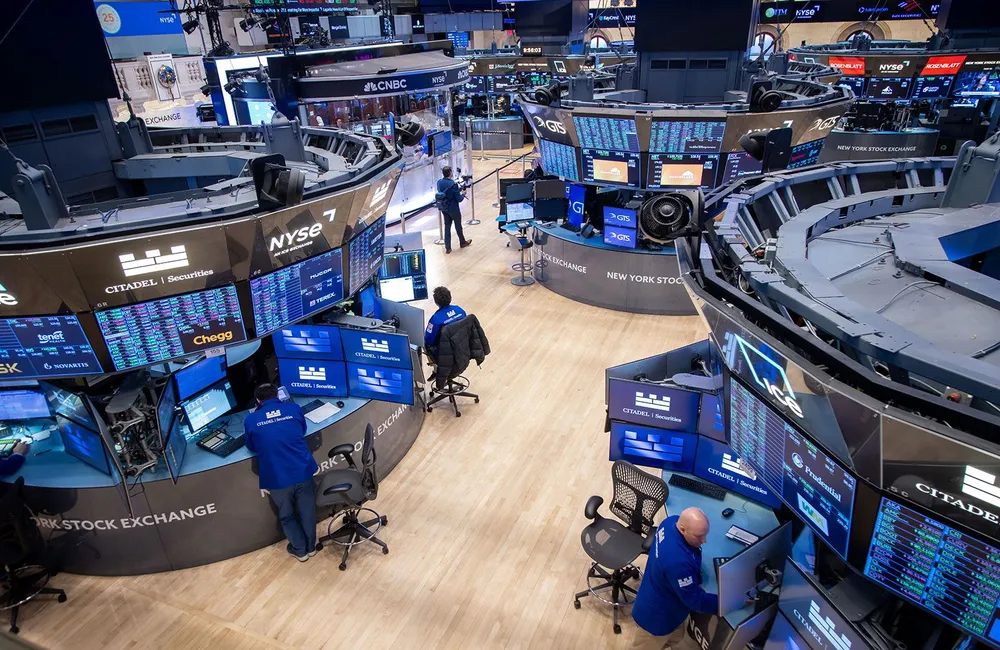Down down, prices are down
Dreaming and Hoping Now what if house prices fall, which everyone accepts that they are going to, then what?
The hypothetical is anything but. The capital cities of Sydney and Melbourne are already falling as higher interest rates block the conveyor belt of new buyers. In June 2022 Sydney recorded a fifth consecutive month of declines, with the city now 3.2 per cent below its February peak. Melbourne, meanwhile, fell 1.1% last month.
Boffins believe prices have a long way to go. AMP Chief Economist Shane Oliver is predicting a 15% to 20% fall across the country. Economists at mortgage-machine Commonwealth Bank are tipping 15% peak to trough. Christopher Joye on the “Aussie housing crash” in The Australian Financial Review.
Falling house prices are particularly pernicious because a great deal of the economy’s plumbing runs through the housing sector. When the well-appointed, spread-out townhouses see their value drop, they set off shock waves of spending changes that ripple through the economy, pinging everything from banking to airlines. At its ugliest, falling prices spiral into a downward whirl of spending and employment that had its apotheosis in Japan’s brutal property market crash of the 1990s. There’s no way that will happen in Australia. So, what will? It goes something like this.
For starters, homeowners suffer a hit to their paper wealth. After the first 10%, the sophisticated owner of a $1 million asset becomes the slightly-embarrassed occupier of an asset worth $900,000. When you feel poor, you spend less money, a reliance on the so-called wealth effect. They are also less likely to have as much available since more of their income will be sucked up by rising interest.
By a rough rule of thumb, consumption falls 1%-1.5% for every 10% decline in property prices. Shane Oliver’s forecast decline of 15%-20% at the top end would represent losing a year’s worth of consumption growth according to his rule.
Consumer discretionary stocks get hurt on less spending. A person who feels poorer will purchase a fewer number of flights and washing machines; they’re less able to splash out on dinner or the movies.
The industry has already taken a beating this year amid fears that a recession would hurt spending. The S&P/ASX 200 Consumer Discretionary index is down 20 per cent year to date. A comparable gauge in the US has slumped 30%.
Everything bar the kitchen sink gets a hammering in downturns, but housing downturns can be particularly broad and brutal as they affect construction and renovations, furnishings, housing stock and even services like solicitors. All are squeezed as prices are dropping and fewer homes are trading hands. The stakes can also be higher, because for many homeowners their house is their biggest asset. Tim Lawless, head of research at CoreLogic, refers to it as the housing multiplier effect.
Banks are particularly exposed to falling house prices and not surprisingly it is in Australia where many of our blue-chip banks are no more than glorified mortgage writers. The first is earnings. Declining house prices reduce the demand for mortgages. Then the mortgages that are written will be smaller. As the mortgage cash cow shrinks, so do earnings. This is combined with weak demand for other forms of credit.
A decline in house prices does not automatically mean that there are more bad debts per se. People in such a situation can still pay their mortgage, even if they don’t want to. Australians can’t “just hand the keys back” but be left with the debt. The problem for banks is that whatever causes a decline in house prices (rising rates in our case), also causes people to lose jobs (and rising rates are intended to slow the economy and job losses are always, at least, collateral damage). If defaults do become more widespread, banks will have to provision for losses, adding to the pain on earnings.
Bank investors, as we’ve noted before, aren’t waiting to see how bad defaults get. Commonwealth Bank and Westpac fell into bear-market territory in June as the sector plunged.
Prices eventually fall low enough to attract buyers back to the market and the cycle begins anew, according to Lawless. Policy makers can assist by easing lending conditions or reducing interest rates.
This came to a head right before the pandemic. National capital city house prices tumbled 10 per cent between 2017 and 2019, the largest slump in almost four decades. The drop was 15% in Sydney. The prudential regulator had tightened lending standards, and the crackdown on investors had been especially harsh.
It is unfolding more or less as one would have anticipated. Housing loans were throttled. Bank shares toppled by almost a quarter between 2017 and 2019 (with a bit of an assist from the Royal Commission revelations). The economy slowed too. Retail spending growth fell by a third nationally compared with the earlier period. Construction plummeted. But for all of its lurching fits and starts, unemployment moved lower.
There was “no evidence of genuine distress,” says Lawless. Homeowners swallowed the equity losses and for the most part continued paying their mortgages.
And that’s what most people believe will happen again. Oliver is prepared for a modest cyclical downturn. Lawless expects increasing affordability and a slow reversion to laxer credit conditions to eventually bring buyers back into the market. Bad for banks, but no more than a nagging cough for the economy.
The Reserve Bank released its bi-annual Financial Stability Review in April, a 65-page document of whizz-bang charts that say just that – most homeowners have plenty of equity, big payment buffers and jobs.
But housing busts are also born on the margin and there is a small fraction of borrowers who are clearly vulnerable. The bank said 30% of variable-rate borrowers would see repayments increase by 30% if there is a 2% rise in rates. One-half of that group had stashed aside less than a year’s worth of their April minimum repayments.
Also worrying are the millions of fixed-rate loans that will reset to variable in the next 18 months. The bank forecasts that about 10% of all owner-occupiers and 20% of investors with these loans will see repayments surge more than 30% if rates are 2% higher by the end of 2023.
At the time the bank published its modelling with a cash rate of zero and a 2% increase was a fairly healthy stress test scenario. Today, with the cash rate at 1.35% and heading north of 2% by Christmas, it is proving to be dangerously lax.
So what would need to happen for it to become a severe recession? The domino to watch is employment, according to Lawless and Oliver.
Unemployed people fall behind on mortgage payments. They are forced to become distressed sellers that drive prices down. More people stop spending, more jobs are lost, more homes dumped on the market. Loan souring prompts banks to reel in credit. Savage property crashes hobble the economy for decades. It took more than a decade for United States house prices and unemployment levels to return to pre-financial-crisis levels. The echoes in Japan are still being felt a generation later. Here's Oliver on the risks:
“Once you start going in one direction, there is always a chance it can feed upon itself and continue. A small initial turn becomes an even deeper one. The danger here is if you’re not seeing some relief from the pressure in the next three or four months, then it keeps going to the downside and it’s even harder for the Reserve Bank to turn the thing around.”
Previously, Australian policy makers had succeeded in moving to a cut in rates by the time unemployment began to rear its head. That won’t be so easy next year. If inflation refuses to yield, the Reserve Bank may be forced to choose between a rock and a hard place: give a boost to the economy and inflation will be off the hook; rein in inflation and the economy will be dead.
One glimmer of hope: in the depths of the pandemic, the Reserve Bank conducted a modelled exercise to see how the banking system would stand up to a doomsday scenario. The banks make it through an 8% unemployment and 40% house-price scenario. It isn’t pretty, but nor is it a 2008-style falling into a Lehman Brothers pit.





















